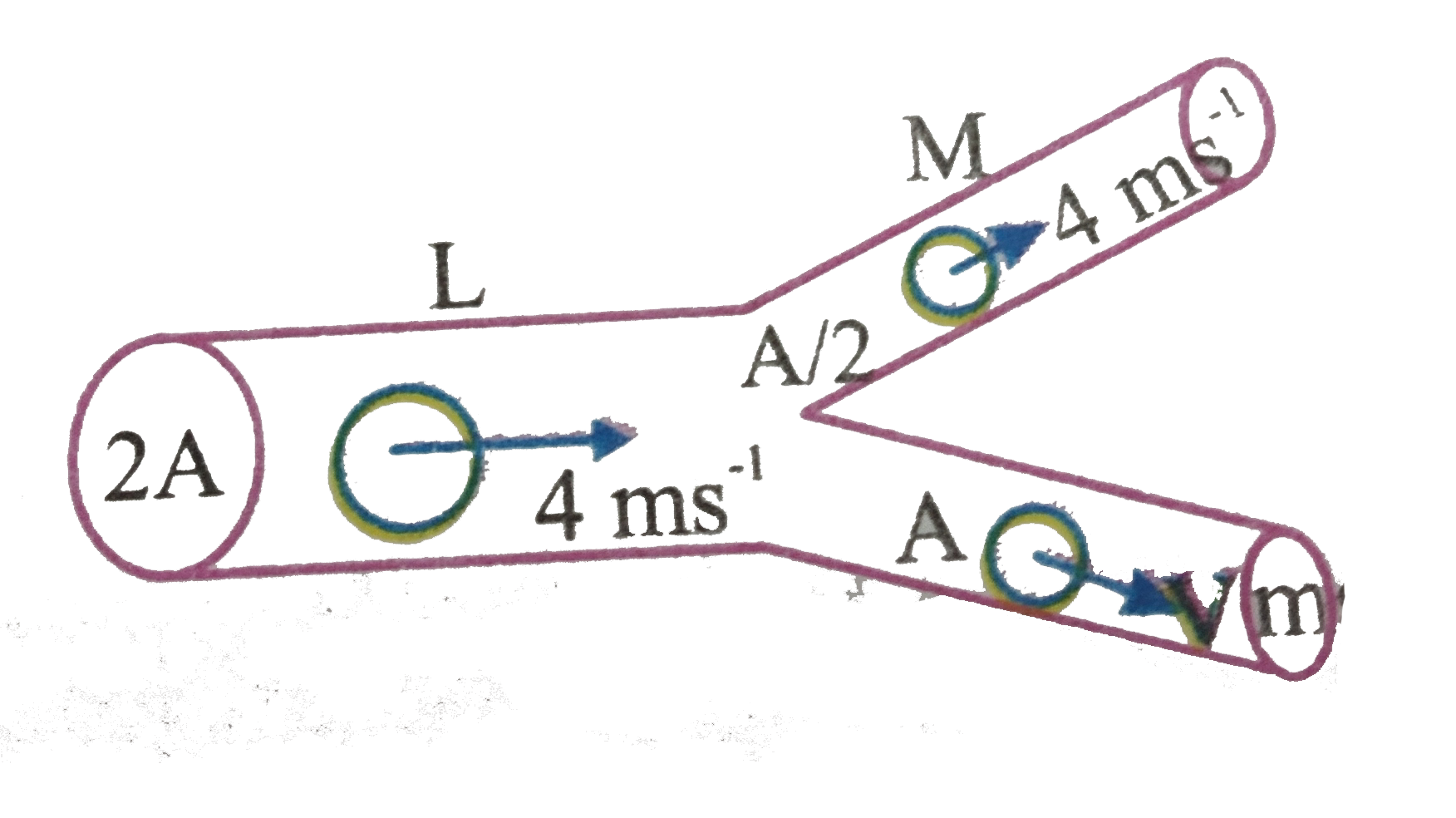What happens when the velocity of the liquid flowing through a horizontal tube is gradually increased?
When a liquid flowing through a horizontal tube with a velocity less than its critical, the flow of liquid is laminalr flow.
When the velocity , the liquid flow becomes turbulent flow.
Topper's Solved these Questions
- BOOK - PRADEEPCHAPTER - PROPERTIES OF BULK MATTEREXERCISE - Long Answer questions33videos
PROPERTIES OF BULK MATTER
- BOOK - PRADEEPCHAPTER - PROPERTIES OF BULK MATTEREXERCISE - Solved Examples159videos
PROPERTIES OF BULK MATTER
- BOOK - PRADEEPCHAPTER - PROPERTIES OF BULK MATTEREXERCISE - Very short answer questions163videos
PROPERTIES OF BULK MATTER
- BOOK - PRADEEPCHAPTER - PHYSICAL WORLD AND MEASUREMENTEXERCISE - Competiton Focus Jee Medical Entrance18videos
PHYSICAL WORLD AND MEASUREMENT
- BOOK - PRADEEPCHAPTER - RAY OPTICSEXERCISE - Problem For Practice(a)25videos
RAY OPTICS
Similar Questions
Knowledge Check
- Question 1 - Select One
The velocity of liquid flowing through a tube at certain distance from the axis of tube
Aincreases with distance.Bremains constant.Cdecreases with distance.Ddepends upon length of the tube. - Question 2 - Select One
A fluid is flowing through a tube of length L. The radius of the tube is r and the velocity of the fluid is v. If the radius of the tube is increased to 2r, then what will be the new velocity?
A4vBv/4Cv/2D2v - Question 3 - Select One
The rate of flow of a liquid through a capillary tube is
Adirectly proportional to the length of tube.Binversely proportional to the difference of pressure between the ends of the tube.Cdirectly proportional to the 4th power of the radius of the tube.Dindependent of the nature of the liquid.
What will happen to the flow of a liquid if it passes through a region of high pressure?
View SolutionWhen a liquid moves steadily under come pressure through a horizontal tube, it moves in the form of cylindrical layers coaxial to the exds of the tube. The velocity of different layers is different. The velocity of the layer is maximum along the axis of the tube and it decreases as one moves towards the walls of the tube. According to Poiseuille, the rate of flow of liquid through a horizontal capillary tube varies as the relation Vαpr4ηl where l and rare the length and radius of the tube and p is the pressure different between the ends of the tube and is the constant of proportionality.
Which of the following is correct:View SolutionUnder a pressure head, the rate of orderly volume of liquid flowing through a capillary tube is Q. If the length of capaillary tube were doubled and diameter of the bore is halved, the rate of flow would become
View Solution
An incompressible liquid flows through a horizontal tube LMN as shown in the figure. Then the velocity V of the liquid throught he tube N is:View SolutionWhen a liquid moves steadily under some pressure through a horizontal tube, it moves in the form of cylindrical layers coaxial to the ends of the tube. The velocity of different layers is different. The velocity of the layer is maximum along the axis of the tube and it decreases as one moves towards the walls of the tube. According to Poiseuille, the rate of flow of liquid through a horizontal capillary tube varies as the relation Vαpr4ηl where l and r are the length and radius of the tube and p is the pressure different between the ends of the tube and is the constant of proportionality.
When two capillary tubes through which the liquid is flowing are joined in series then the equivalent liquid resistance isView Solution

